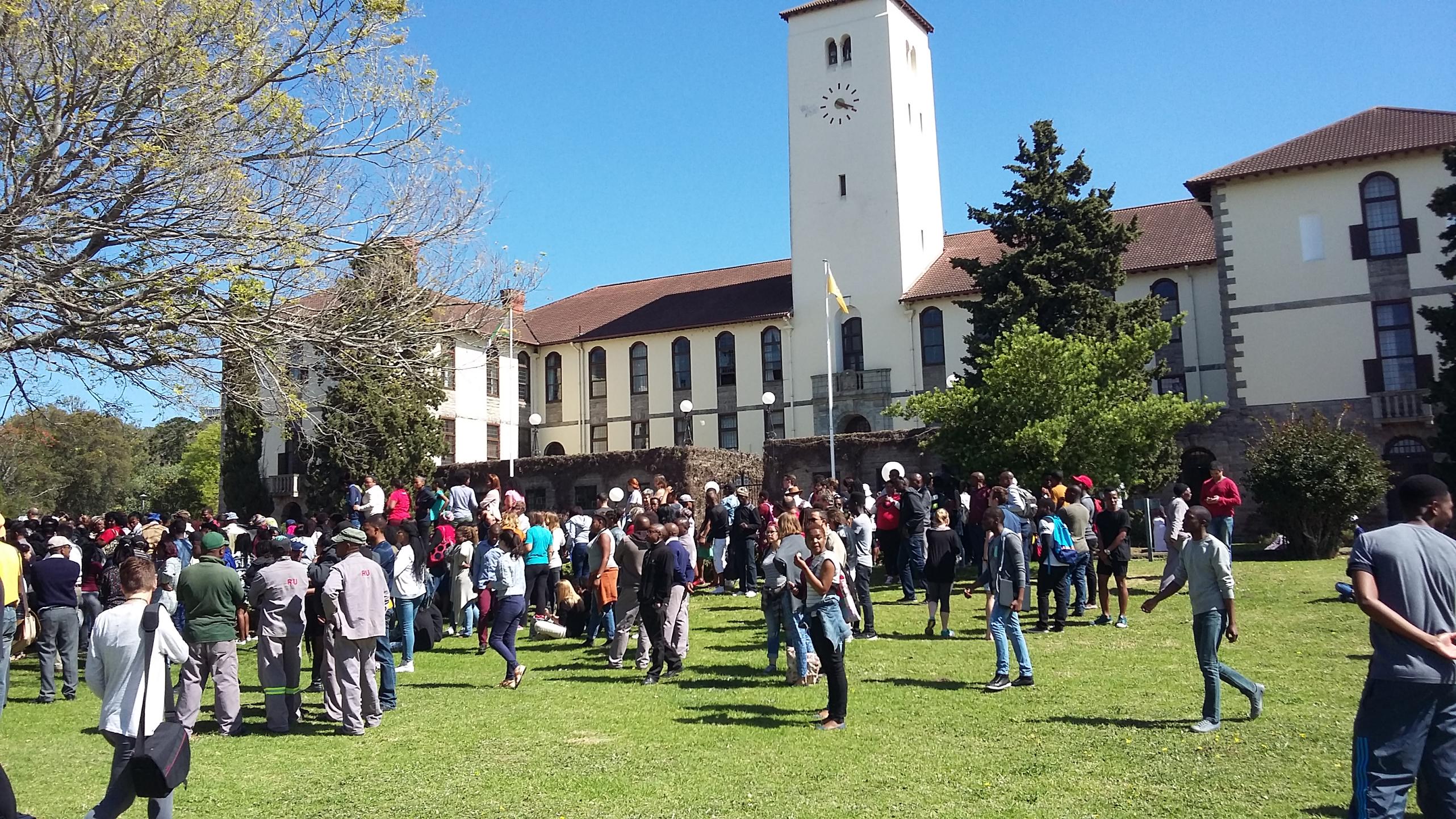Watch this video:
What do you see? Is it a turning point, a tragedy, a farce, or just another day of escalating violence? Stop shooting at us! Stop shooting! What do you see when you watch this video? What do you hear?
For the past year and more, students across South Africa have led the national debate, and struggle, towards, and away from, justice, democracy and equality. Starting with the assault on a statue of Rhodes at the University of Cape Town to today, students have consistently pushed everyone to engage in a national movement-based inquiry into, again, justice, democracy and equality. From #RhodesMustFall to #OutsourcingMustFall to #PatriarchyMustFall to #FeesMustFall, and between and beyond, students have insisted that the time for waiting is long past due. From primary and secondary schools to universities, students have taken on racism, sexism, classism, cis-privilege, homophobia, transphobia, and violence, and intersections of violence, of every sort.
Time and time again, they have been met with State violence, from the language of members of the national government to the weapons and arms used by police and private security. While these incidents have been reported, the video of yesterday’s “event” has caught the attention of many. “President Jacob Zuma has instructed the justice, crime prevention and security cluster to `deal with the mayhem’”, but it’s not clear which mayhem is being referenced. “Rhodes University management says it’s outraged at how police manhandled and shot at students on campus”, but then who called the police in the first place?
None of this is new. Worse than not new, it’s all too familiar. As the editor of the Con Magazine lamented, “It’s like the eighties again. South Africa is an angry place, burning itself out at all ends. Beefy white men in police uniforms are hiding behind hedges and shooting at students. They are firing into the Rhodes University campus. The Black body is violated. White Lady Babylon be shoving. Babylon be shoving. All the time. Police open fire at students without warning. They shoot. They shoot without warning. At unarmed students. They grab and bully and shove and violate and traumatise and shoot.”
For some, while reminiscent of the 80s, the theater of violence is also new, in that it has been in process for quite some time: “Fees Must Fall is about how a democracy deals with a history of oppression. It’s about healing broken bones, about a generation’s phantom limbs and its children refusing amputation.” A year ago, Sisonke Msimang noted, “South Africans can no longer educate their children on the basis of luck and the goodwill of overstretched students. The students who have been protesting since April have not yet won the results they are after. Despite this, the mass action has served as a powerful reminder to South Africans that they are capable of far more than they are presently achieving. Emboldened by the courage of those who took to the streets, older South Africans have also been inspired to tell their stories. We are all beginning to understand that what has been hidden must now be made public.”
What has been hidden has been hidden in plain sight. Now, the students are making demands, in what many feel is a revolutionary moment. Their demands are impossible. Faculty commissions and others have suggested possible avenues towards more equitable fee and educational funding structures. Free education is possible. Whether the danger in student demands is the possibility of free, or even mostly free, education or the fact of students organizing and making demands no longer matters, because what now sits alongside their demands is State violence. It’s State violence that is barricading the roads, all in the name of protection. Today the arrested students were released: “It emerged in court charges against them had not been properly formulated.”
Watch the video. What do you see? What do you hear? “Do you feel our pain? Do you feel our pain!”

“Rhodes becomes the university currently brutalised by police”
(Video Credit: The Oppidan Press / YouTube) (Photo Credit: The Daily Vox)